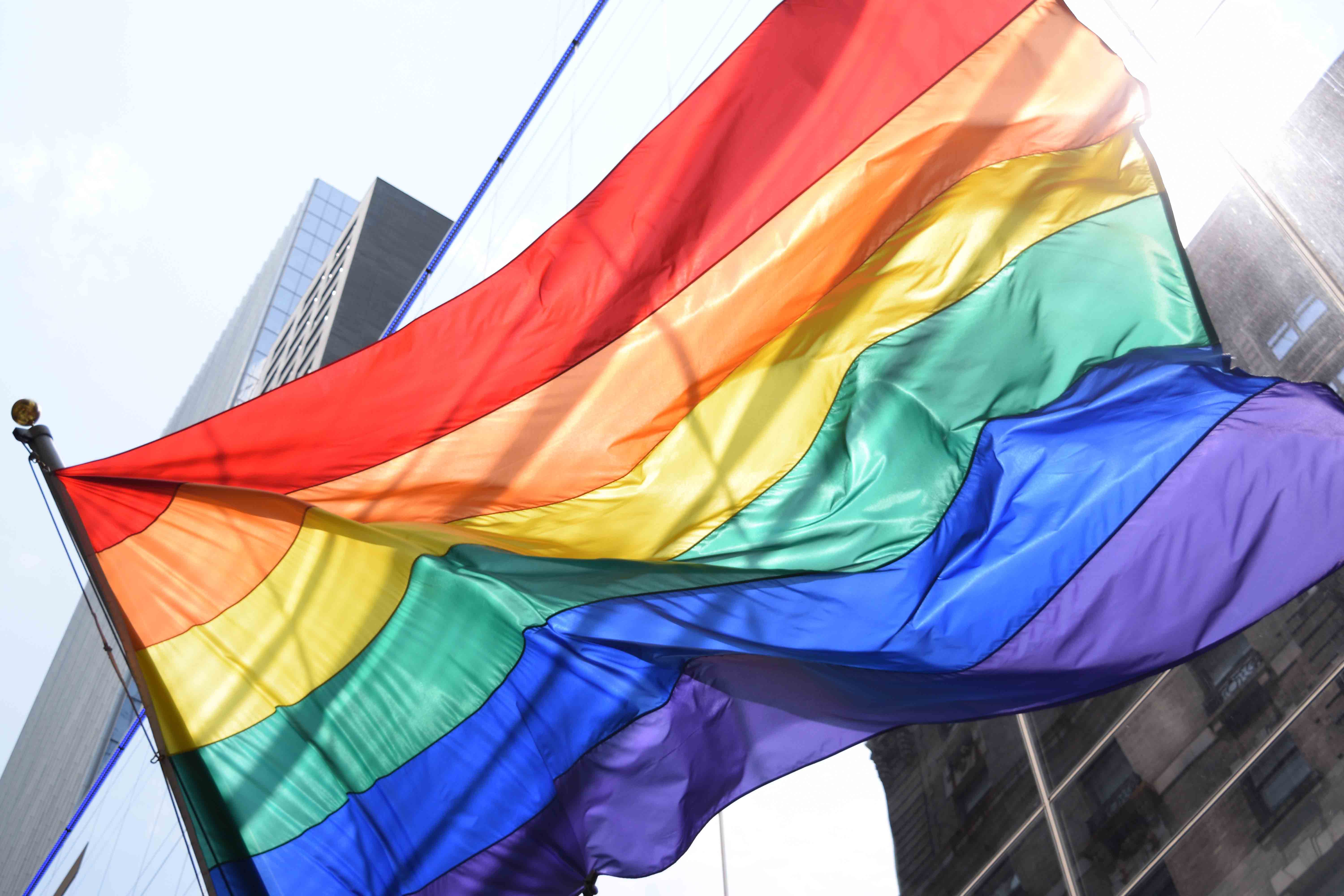
The Number of People Identifying as LGBTQ+ Has Doubled in 10 years. What's Driving the Increase?
Filed Under: LGBTQ+, Multicultural
Anna Rossi
Director, Quantitative Research
How many LGBTQ+ people are there in the United States?
That’s one question we know is on many clients’ minds when thinking about reaching out to the LGBTQ+ market. It’s a good question. You may have recently heard about the growing size of other marginalized groups like Hispanics and African Americans from the most recent Census results. But the US Census doesn’t count LGBTQ+ people or households. We must rely on surveys from other sources to estimate the size of the LGBTQ+ population, and since those are often less publicized, many don’t know how big the LGBTQ+ population actually is.
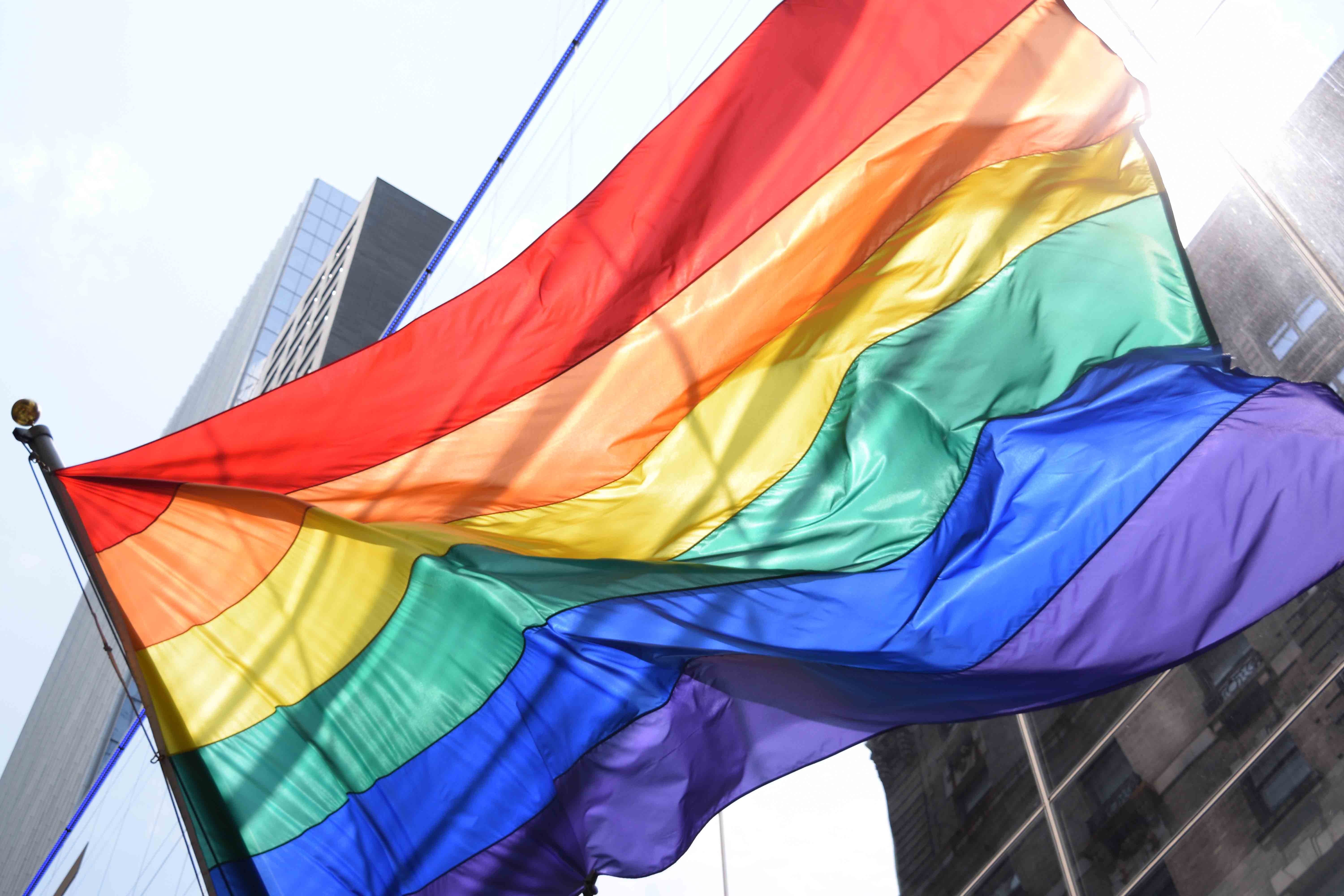
Gallup has been tracking how many Americans identify as LGBTQ+ since 2012 and remains a trusted source for estimating the population size. Earlier this year, they released their latest estimate from their survey conducted in 2021: 7.1% of adults in the US identify as LGBTQ+.
That’s 23.4 million people in the US. That’s larger than the population of Asians in the US. Thinking about this in another way – if LGBTQ+ people were a state, they would be the 3rd largest state, behind only California and Texas.
And maybe most interestingly, that’s double the size of the LGBTQ+ population in 2012 (which was estimated at 3.5%).
Why are more people identifying as LGBTQ+?
Now you might wonder how the number of LGBTQ+ adults in the US doubled in under ten years, and that’s a good question. There are three interlocking reasons why the number has been consistently growing since Gallup started tracking it in 2012 and why it’s highly likely that it will continue to grow.
1. Younger generations are more likely to identify as LGBTQ+
Gallup also captures respondents’ age, allowing them to report how many people identify as LGBTQ+ by generation. As shown in the graph below, a much higher percentage of Gen Z (especially) and Millennials identify as LGBTQ+ compared to older generations.
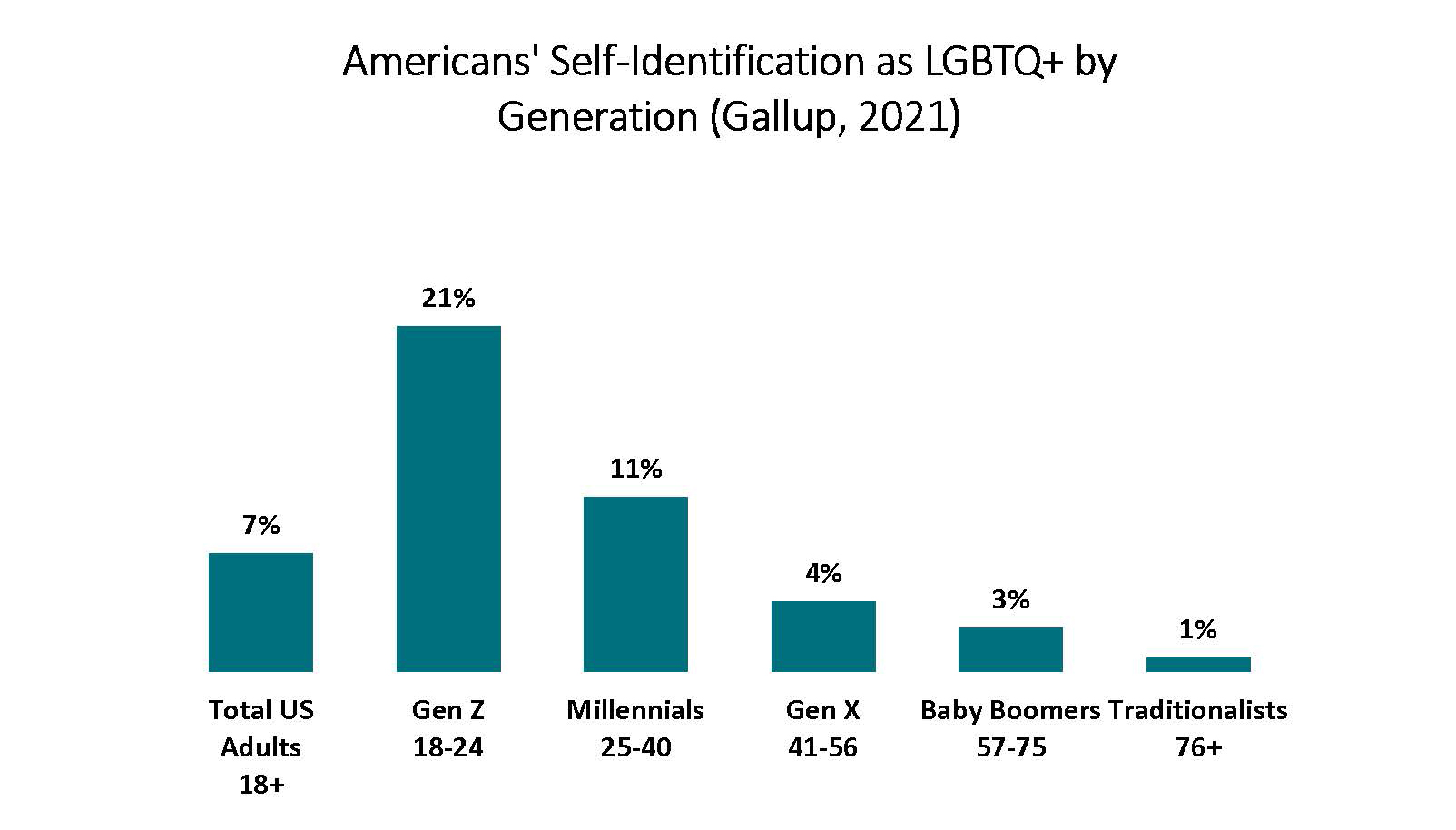
As more young people reach adulthood and are included in Gallup’s estimates, the overall number of LGBTQ+ adults living in the US will continue to increase. In 2012, only those born by 1994 were adults, which doesn’t include all Millennials (those born between 1981 and 1996). Now, Gen Z is just reaching adulthood and starting to be included in Gallups estimates (2021 only included those born between 1997 and 2003), and they’re having a real impact on the overall proportion of LGBTQ+ adults in the US.
2. Growing awareness of LGBTQ+ rights and issues
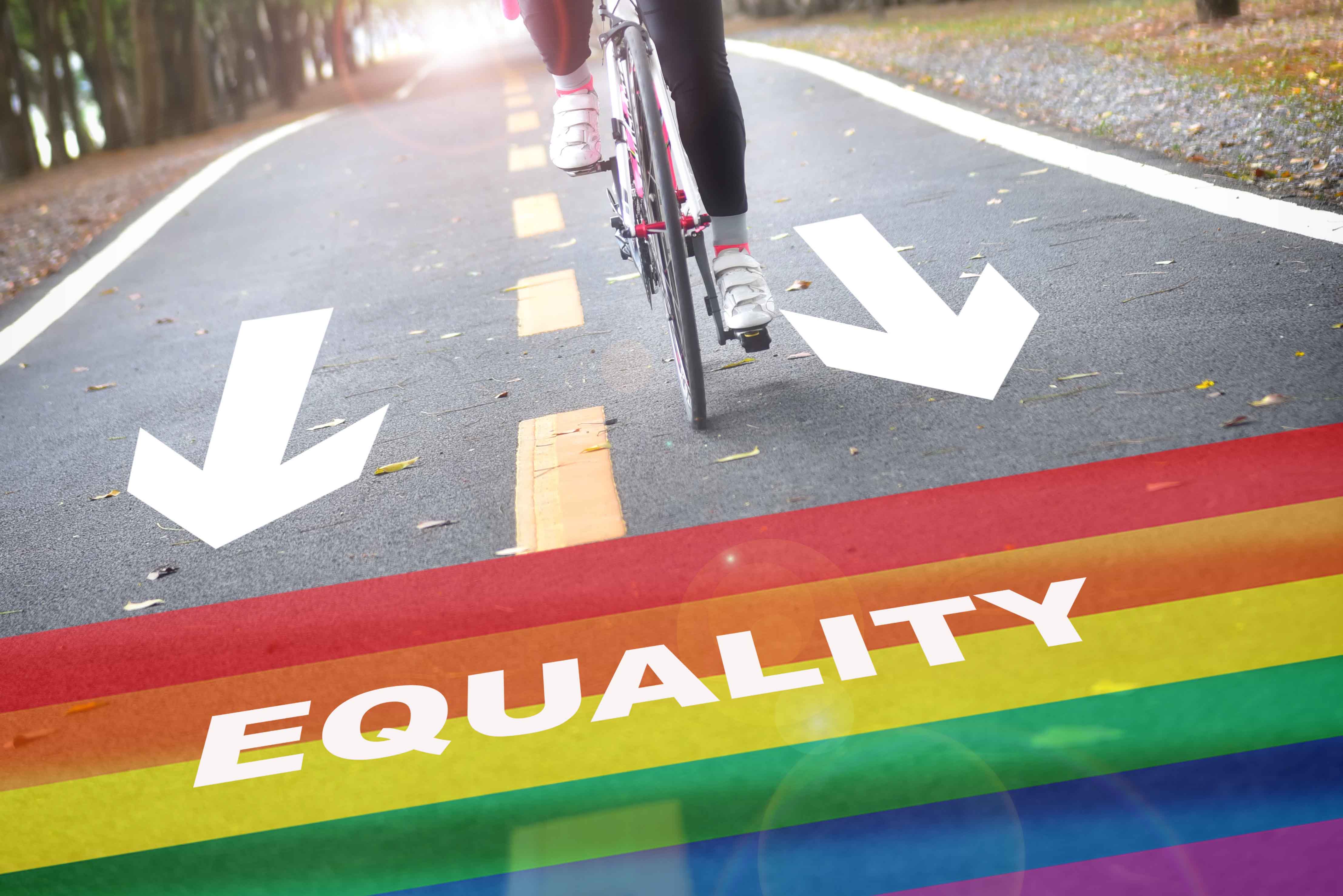
While LGBTQ+ people have been around for as long as people have been around, the LGBTQ+ rights movement is relatively new. And as the movement has grown, so has the national attention. The Stonewall Riots in the 1970s put a spotlight on LGBTQ+ issues and sparked a national debate. A key aspect of the early LGBTQ+ rights movement was focusing on ‘coming out of the closet.’ In other words, many felt that if other Americans realized how many LGBTQ+ people they knew in real life, they would be more accepting of the LGBTQ+ community as a whole. There is some truth to that, and acceptance of the LGBTQ+ community has largely increased since then (even if the legal change has been slow). With more attention on LGBTQ+ issues, growing acceptance, and more examples of other LGBTQ+ people in the media, it can be easier for people to acknowledge their own sexuality and be willing to share that information with others – including on a survey like the Gallup poll.
In fact, despite the growth, LGBTQ+ is very likely underreported in surveys. Not everyone may feel comfortable sharing their true gender identity or sexuality with others, even in an anonymous survey. This is especially true if people are afraid of discrimination or live in a community with lower acceptance. Since the national acceptance of LGBTQ+ people have been higher while Gen Z and Millennials grew up compared to when older generations were coming of age, it’s reasonable that they would be more likely to disclose their sexuality in a survey.
Furthermore, older generations were more adversely affected by the AIDs epidemic in the 80s and 90s, which had a particularly devastating effect on gay men and trans people. So many died in those decades, but now there is more knowledge about the disease and treatments available that it’s no wonder there are fewer living LGBTQ+ people in older generations.
3. There is now a better understanding of gender & sexuality and how to ask about it
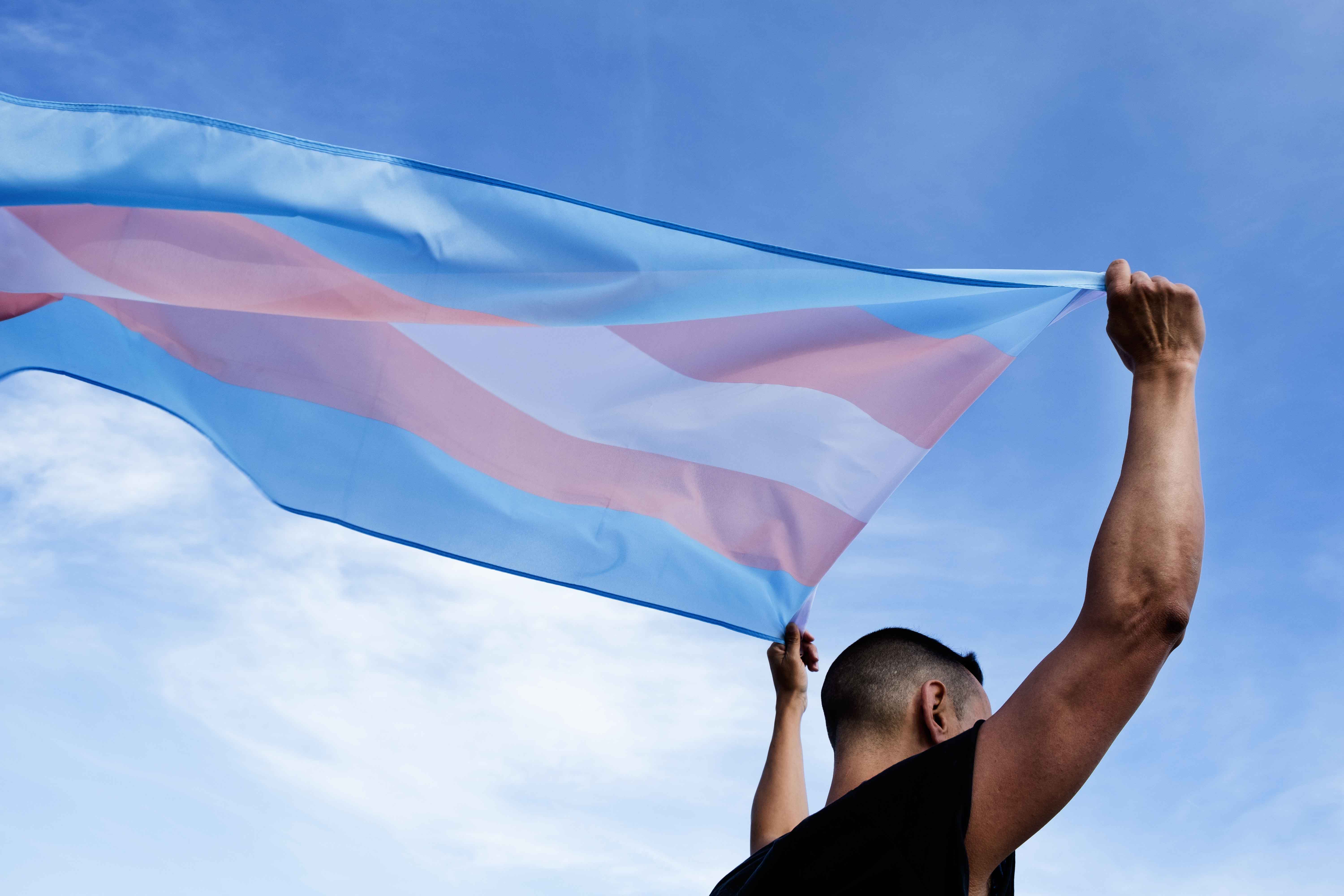
Earlier I mentioned the beginning of the LGBTQ+ rights movement with the Stonewall Riots. Even though Stonewall took place only about 50 years ago, we didn’t have the terminology LGBTQ+ back then. For a while it was called the ‘gay rights movement,’ and it was largely focused on gay men, ignoring all other sexualities and gender identities that make up today’s community. If the Gallup poll had been conducted back then, there would have been many lesbians, bisexuals, transgender, and other queer people who might not have identified with the cisgender, predominantly white, gay men focused movement of the time. You may have noticed that the acronym used to describe the community has evolved, even over the last couple of years. These changes mark an effort to be more inclusive of all gender identities and sexualities. As our understanding evolves and we find new words to describe our experiences more accurately, more people can find the term that resonates with their identity and connects them to the community. This is one reason that the way we ask about gender and sexuality is so important for researchers – we need the right tools to understand people’s identities accurately and then count them.
Our POV:
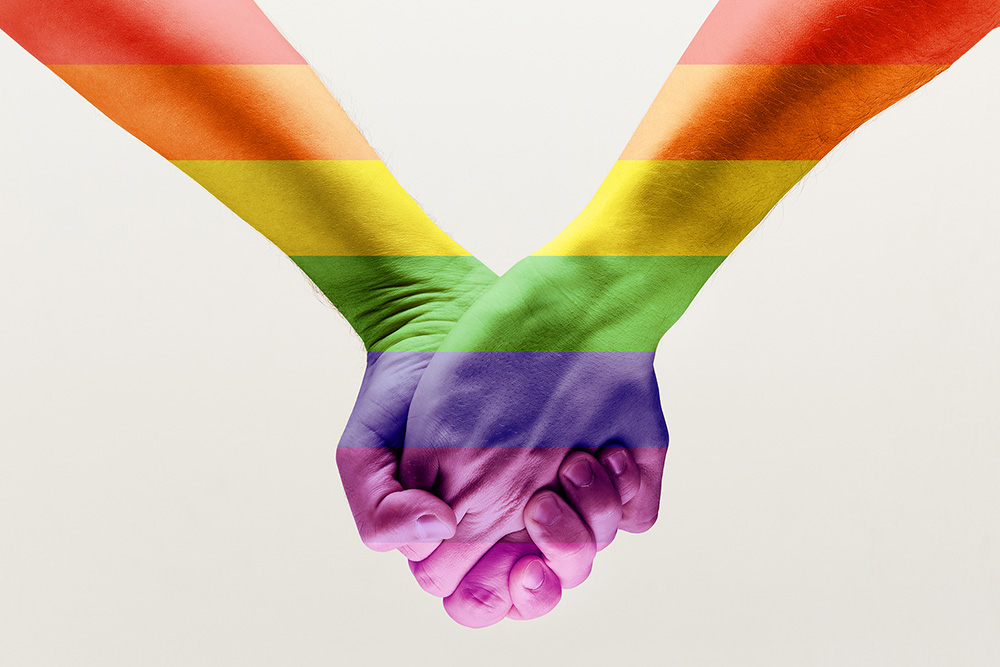
Now accounting for 7.1% of the US adult population, the LGBTQ+ community has doubled in size over the past nine years, and all signs indicate that it will continue to grow in the future at a fast rate as more young people reach adulthood. The LGBTQ+ community is a valuable cohort for brands to target. The LGBTQ+ community has an estimated spending power of $1 trillion. As Millennials enter their prime earning years and Gen Z continues to move into the workforce, that spending power will increase quickly! Many marketers recognize the value of targeting younger generations; given that about 28% of Gen Z & Millennials identify as part of the LGBTQ+ community, resonating with the LGBTQ+ community will be key to targeting younger generations. C+R’s CultureBeat team has years of experience with the LGBTQ+ community and across generations and can help guide your team from ‘How many LGBTQ+ people are there in the United States?’ to ‘How can I authentically connect with the LGBTQ+ community?’.
Source: https://news.gallup.com/poll/389792/lgbt-identification-ticks-up.aspx
explore featured
Case studies

